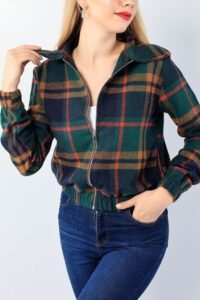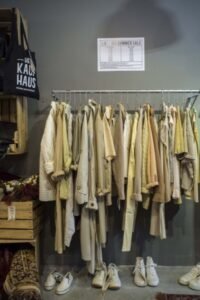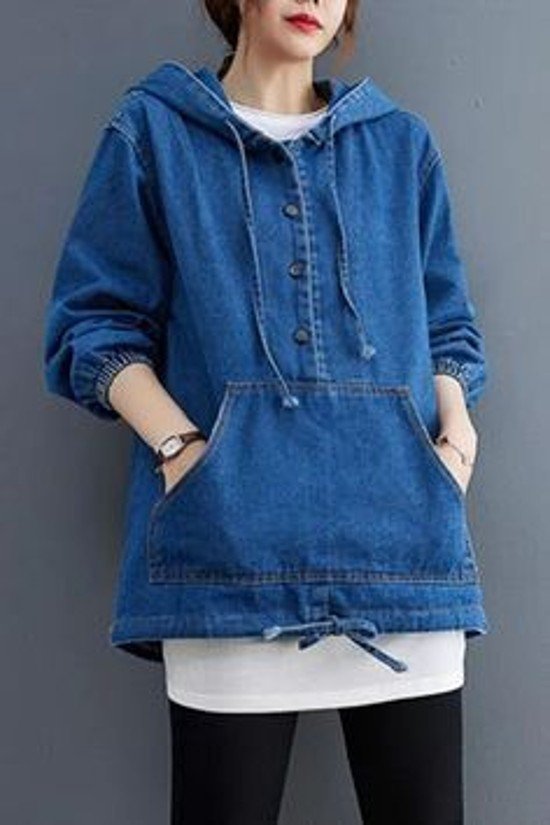Apparel goes circular sustainable style trend for 2024
In 2024, the Apparel industry continues to embrace circularity as a cornerstone of sustainable style trends.

1.Circular Design Principles:
Designers are increasingly integrating circular design principles into their collections. This includes using recyclable and biodegradable materials, designing for longevity and durability.
2.Secondhand and Vintage Apparel:
Embracing pre-loved clothing is becoming even more mainstream. Consumers are shopping at thrift stores, vintage boutiques, and online platforms for secondhand clothing, contributing to a more circular economy by extending the lifespan of garments.
3.Clothing Rental Services:
Subscription-based clothing rental services are gaining popularity. Instead of purchasing clothing outright, consumers are opting to rent garments for special occasions or everyday wear.
4.Upcycling and DIY Apparel:
DIY Apparel and upcycling are flourishing as creative outlets and sustainable practices. People are repurposing old clothing or textiles into new garments or accessories, adding personal touches and reducing waste.
5.Repair and Care:
There’s a growing emphasis on repairing and maintaining clothing to prolong its lifespan. Brands are offering repair services, and consumers are learning basic sewing skills to mend garments themselves.
6.Digital Apparel and Virtual Try-Ons:
Digital Apparel is on the rise, allowing consumers to experiment with different styles virtually before making a purchase. This reduces the need for physical production and transportation of clothing, contributing to a more sustainable Apparel industry.
Overall, the circular Apparel trend for 2024 is characterized by a shift towards more conscious consumption habits, innovative solutions.
Circular Design Principles:
Circular design principles are at the forefront of the Apparel industry’s sustainable style trend.

Material Selection:
Designers prioritize materials with minimal environmental impact, such as organic cotton, hemp, and recycled fibers. They also explore innovative alternatives like lab-grown textiles.
Durability and Longevity:
Garments are designed to withstand wear and tear, with a focus on quality construction and timeless aesthetics.
Modularity and Versatility:
Modular designs allow for customization and versatility, enabling consumers to mix and match components to create multiple looks from a single garment.
By integrating circular design principles into their practices, Apparel brands are driving positive change towards a more sustainable and resilient industry in 2024.
Secondhand and Vintage Apparel:
Secondhand and vintage Apparel play a significant role in the Apparel industry’s circular sustainable style trend. Here’s how these elements contribute to the movement.

Mainstream Acceptance:
Secondhand and vintage Apparel have become increasingly mainstream, with consumers embracing the idea of purchasing pre-owned clothing as a sustainable alternative to fast Apparel.
Diverse Shopping Options:
A wide range of platforms and retailers cater to the demand for secondhand and vintage clothing, offering diverse shopping experiences both online and offline.
Quality and Unique Pieces:
Secondhand and vintage clothing often boast higher quality craftsmanship and unique designs compared to mass-produced fast Apparel items.
Overall, secondhand and vintage Apparel are integral components of the circular sustainable style trend in 2024, offering consumers ethical, affordable.
Clothing Rental Services:
Clothing rental services are playing a significant role in the Apparel industry’s circular sustainable style trend. Here’s how these services contribute to the movement.

Reduced Consumption:
Clothing rental services encourage a shift away from traditional ownership models towards access-based consumption. Instead of purchasing clothing that may only be worn a few times.
Extended Product Lifespan:
By renting out garments multiple times to different customers, clothing rental services extend the lifespan of each item, maximizing its utility and minimizing waste.
Access to Designer Apparel:
Rental services offer consumers the opportunity to access high-quality designer Apparel at a fraction of the cost of purchasing outright.
Overall, clothing rental services are driving the circular sustainable style trend in 2024 by offering consumers a convenient, affordable.
Upcycling and DIY Apparel:
Upcycling and do-it-yourself (DIY) Apparel are key components of the fashion industry’s circular sustainable style trend. Here’s how these practices contribute to the movement.

Creative Expression:
Upcycling and DIY fashion empower individuals to express their creativity and personal style by transforming existing garments or materials into something new and unique.
Resource Conservation:
Upcycling and DIY fashion minimize waste by repurposing and reimagining materials that would otherwise end up in landfills.
Customization and Personalization:
DIY fashion allows individuals to customize and personalize their clothing to suit their preferences and body shape.
Overall, upcycling and DIY fashion play a crucial role in the circular sustainable style trend in 2024 by promoting creativity, resourcefulness, and community engagement.
Repair and Care:
Repair and care practices are essential components of the fashion industry’s circular sustainable style trend. Here’s how these practices contribute to the movement.

Prolonging Garment Lifespan:
Repairing and caring for clothing items extend their lifespan, reducing the need for frequent replacements and minimizing waste.
Emphasis on Quality Construction:
Repair-focused Apparel encourages consumers to prioritize quality construction and durable materials when making purchasing decisions.
Empowerment Through Skills:
Learning basic repair and maintenance skills empowers individuals to take control of their wardrobe and reduce reliance on external services.
Overall, repair and care practices are central to the circular sustainable style trend in 2024, fostering a culture of responsible consumption, empowerment.
Digital Fashion and Virtual Try-Ons:
Digital Apparel and virtual try-ons are revolutionizing the fashion industry’s approach to sustainability and circularity. Here’s how these technologies contribute to the circular sustainable style trend.

Reduced Physical Production:
Digital Apparel enables designers to create virtual clothing and accessories without the need for physical production.
Virtual Try-Ons and Fitting:
Virtual try-on technologies allow consumers to visualize how clothing will look and fit before making a purchase.
Customization and Personalization:
Digital Apparel platforms offer customization and personalization options, allowing consumers to tailor virtual garments to their preferences and body measurements.
Overall, digital Apparel and virtual try-ons are driving the circular sustainable style trend in 2024 by offering innovative solutions to traditional fashion challenges.
Few more details click here interesting topics
